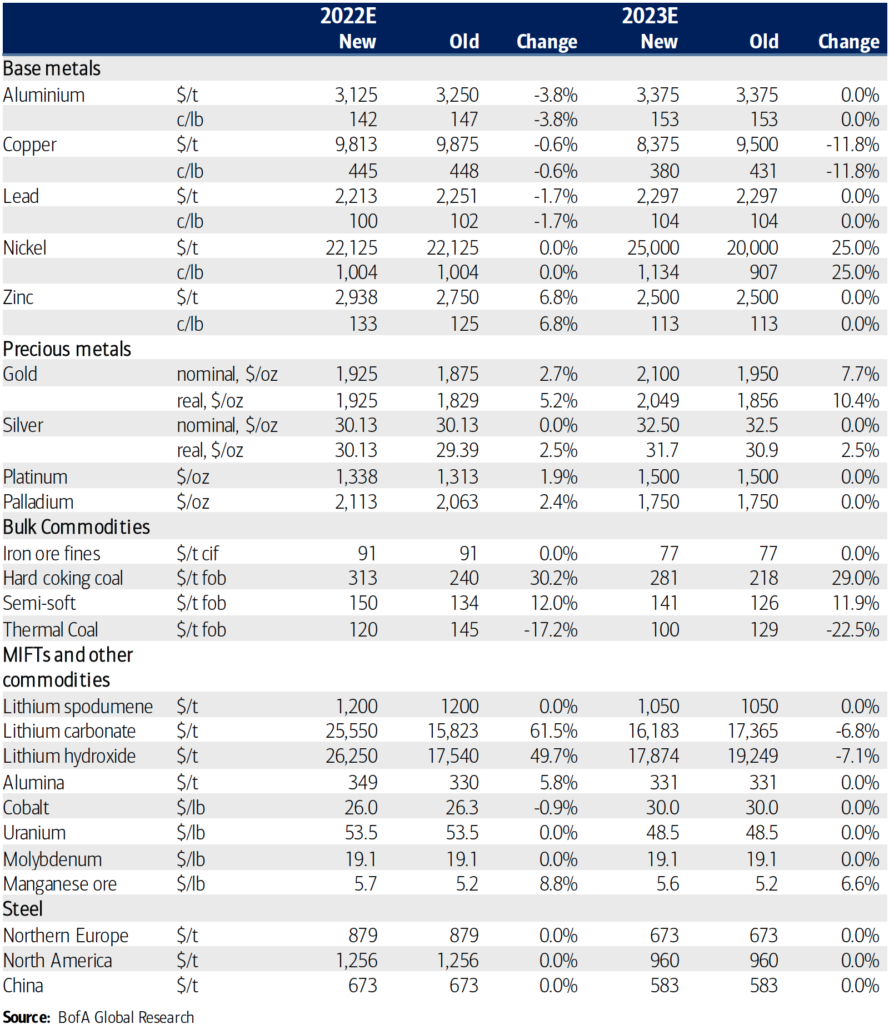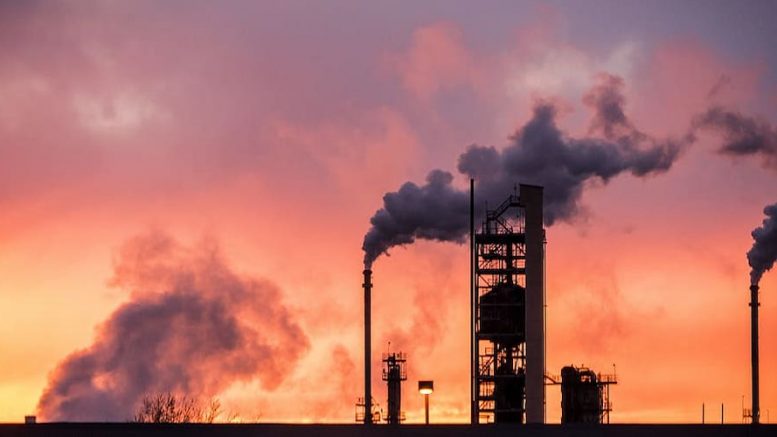The recent 26th edition of the Conference of the Parties (COP26) brought about renewed vigour to phase down carbon dioxide emissions across the globe. Still, to get there, the mining industry will face unprecedented demand for certain metals key to facilitating the energy transition.
Bank of America recently weighed in on the outlook for essential commodities in 2022, concluding that ‘decarbonization’ is the critical driver for metals important for future technologies (MIFTs).
“The question as to whether this was a ‘good’ or ‘bad’ COP depends on prior expectations over what the outcome should be on a range of contentious topics, with leaders from nearly 200 countries tackling several outstanding issues, including the current status of nationally determined contributions (NDCs) and the rules governing international carbon markets and climate financing,” said the bank’s UK-based commodity strategist Michael Widmer during a webcast.
While Glasgow was certainly not the ultimate stage in the journey to combat climate change, according to Widmer, it signalled “more the ‘beginning of the end,'” as UK Prime Minister Boris Johnson outlined during the opening ceremony. “All in, we believe that COP26 kept the goal alive of limiting the temperature increase to 1.5 degrees Celsius,” said Widmer.
BofA’s analysts agree that the ambitious goal of ‘net zero’ – a measure of carbon neutrality through a balance of eliminating and removing carbon emissions from the atmosphere – will require a more aggressive strategy, even after the progress achieved in Glasgow. Keeping the momentum going is crucial, and Parties, once again, will have to come back stronger at next year’s summit, to be held in Egypt.

In its pre-COP26 World Energy Outlook, the International Energy Agency (IEA) outlined that progress needs to be made in four areas: an additional push for clean electrification, a focus on energy efficiency, a drive to cut methane emissions from fuel operations and a boost to energy innovation.
The summit’s outcome can be segmented into three main categories: emission reductions, implementation (aka the Paris Rulebook), and climate financing.
Widmer said that from an NDC standpoint, dynamics had improved compared with two years ago when the UK took the presidency for COP26.
“Indeed, 154 Parties submitted new targets accounting for 80% of global emissions. In terms of net-zero pledges, in 2019, only 30% of the world was covered by net-zero targets. Today this figure is at around 90%, including the two largest emitters of CO2, China and India, which announced plans for carbon neutrality by 2060 and 2070, respectively (in effect slightly later than the 2050 target),” said Widmer.
According to the Intergovernmental Panel on Climate Change (IPCC), implementing the updated commitments would put the world on track for a temperature rise of 1.8C by the end of the century.
For the 1.5C target to be met, carbon dioxide emissions must fall by 45% from 2010 levels by 2030. For this reason, the pact requests parties to revisit and strengthen the 2030 targets in their nationally determined contributions by the end of 2022.
“This implies that 2022 will be another year of discussions around tackling climate change, and a reduction in emissions will remain an immediate focus of the global economy,” said Widmer.
While the determinations of the summit will guide the outlook for many commodities, some outcomes were less than desired, such as the wording regarding thermal coal. Despite last-minute amendments to the language from ‘phase out’ to ‘phase down, put forward by China and India, an agreement on tackling unabated coal is still noteworthy, in Widmer’s view.
“Indeed, for the first time, it took 26 editions of COP for this to happen, coal makes its entry into an official UN text. Although falling short of the goal of ‘consigning coal to history,’ the pact still is a breakthrough in curbing the reliance on the most polluting fossil fuel,” said Widmer.
Hence, the global community will further electrify the economy, emphasizing renewable power generation, power storage and transportation using electric vehicles and fuel cell electric vehicles.

NDCs are perhaps the most immediate reference to estimate by how much metals demand will increase.
“Of course, NDCs determine the pace at which global emissions will decline and, hence, the required investment into new infrastructure. The Glasgow Climate Pact explicitly urges nations to develop and deploy green technologies,” noted Widmer.
While aluminum may face headwinds as China’s electricity market normalizes, the country’s smelters will ultimately run into the 45 million tonnes capacity cap, pushing prices higher.
Nickel demand from EVs is expected to increase steadily, keeping the Class 1 refined market tight.
Meanwhile, copper is most exposed to the unfolding economic slowdown, exacerbated by weakness in China’s property sector; that said, a normalization of supply chains, some stimulus, and low inventories are still supportive for now, before the market flips into an expected surplus by 2023.
Further, Widmer expects gold markets to refocus from tighter monetary policy toward “how high rates can rise,” with the expectation that the yellow metal should rally. “We believe 10-year Treasuries above 2.5% are difficult to sustain,” said Widmer.
Meanwhile, increased investment into solar panels should boost silver. Platinum is the rebound trade on the normalization of chip shortages in the auto industry, while substitution from palladium should also help.

Widmer expects China’s steel industry might face another challenging year in 2022, with production and demand declining by 6.1% and 5.1% year-on-year, respectively. US steel prices will likely come under pressure, although infrastructure stimulus should be supportive.
Conversely, China’s iron ore demand is set to be weaker, while the large miners will likely ship more tonnes, pushing the raw material into surplus and keeping prices at marginal costs. That said, a post-Olympics rebound is possible.
Coal prices will likely come under pressure, partially because supply is set to normalize.
Among the MIFTs, BofA sees lithium demand rising exponentially, but more supply should ease some of the tightness. “As such, there is a risk that prices may not rise further,” Widmer cautions.
Some production discipline will also be required in the next couple of years. “Yet, beyond that, [lithium] operators need to strap on their boots to prevent shortages. Indeed, under the IEA Net Zero scenario, demand could rise to 3 million tonnes and 5 million tonnes by 2030 and 2050, respectively, against lithium supply of only 387,000 tonnes in 2020,” said Widmer.
As supply reacts to elevated prices, the cobalt market looks to flip into surplus next year, likely pushing prices lower. Under current battery technologies, fundamentals are set to tighten again from 2024, at which stage consumers may struggle to source sufficient feedstock unless there are innovative solutions, including recycling.
When it comes to diamonds, BofA sees the reopening of the US and Asian economies as pushing rough diamond prices up by 12% in 2021 and another 2% increase in 2022.
BoA has raised its rare earth elements price forecasts by 50%, effectively updating to close to spot pricing for the next six months before forecasting a ‘normalization’ of pricing as supply begins to catch up.
BofA also sees uranium prices heading slightly higher in 2022, as supply discipline continues around the globe amid a dearth of utility contracting activity.


Be the first to comment on "Decarbonization plays the metals fiddle in 2022"